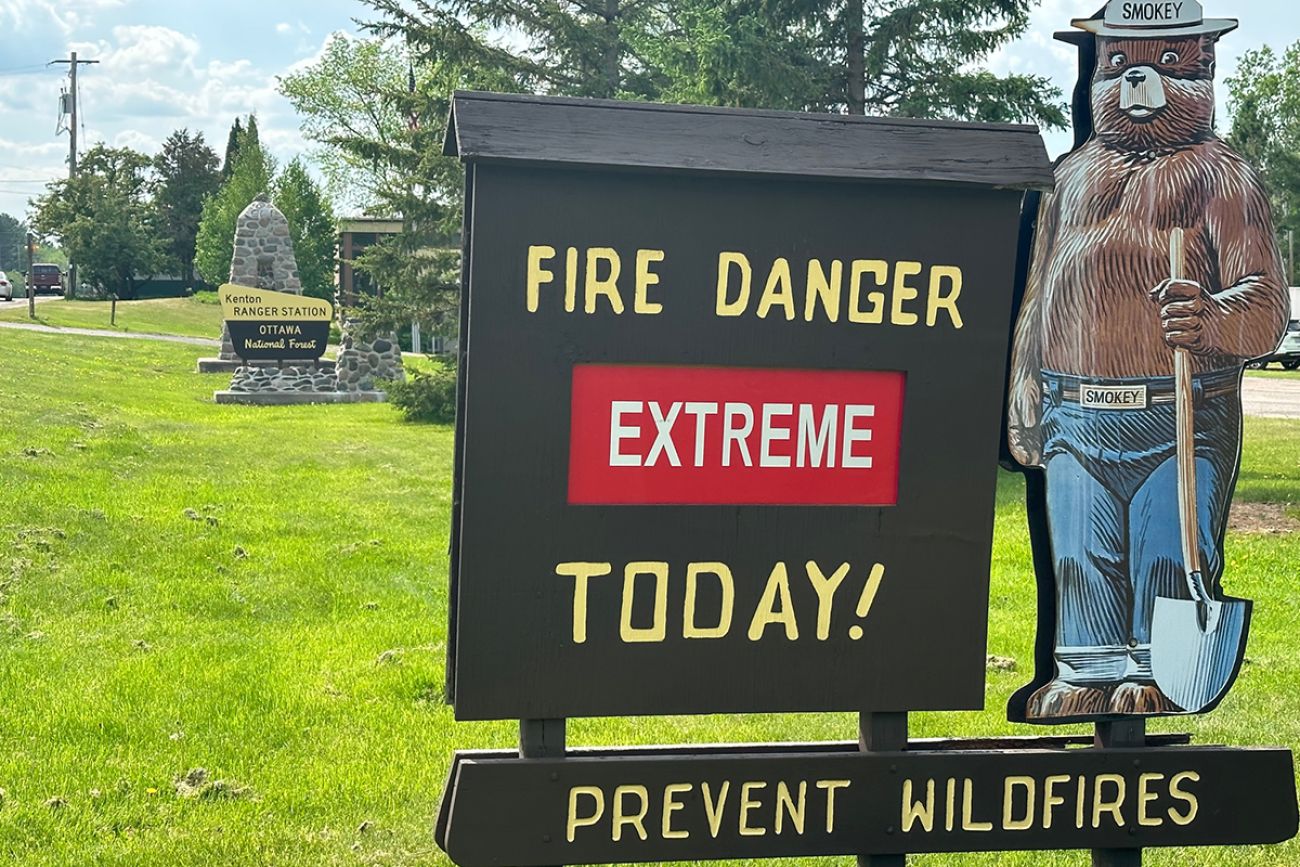Michigan wildfires rage Up North as dry spell puts state at ‘extreme’ risk

- Several dozen wildfires are burning across northern Michigan, and most of the state is at ‘very high’ or ‘extreme’ fire danger levels
- A continued dry spell could lead to similar conditions for weeks or months
- The state DNR said residents should check with their local fire departments before burning anything
June 12: Fire danger eases in much of Michigan; Upper Peninsula still at high risk
June 8: Michigan bills would give farmers ‘right to repair’ tractors, equipment
June 7: Millions under air advisory in Michigan due to wildfires: How to stay safe
June 5: Grayling wildfire could just be the start. Whitmer discourages campfire
Over three dozen fires are currently battering northern Michigan as most of the state sits at “very high” or “extreme” fire risk.
A state wildfire expert said the fire-prone conditions could persist or worsen if the lack of rainfall continues.
The month of May has been drier than usual for Michigan, according to the National Weather Service, making many areas of the state highly susceptible to wildfires, and increasing for danger posed by campers or others who don’t take proper precautions with fires.
Related:
- Michigan wildfires: How to make sure your campfire is safe
- Inside the Michigan lab where scientists breed killer bugs to save trees
- Device dating to 234 B.C. may allow Michigan native fish to bypass dams
- Michigan is the king of potato chips. But a disease is killing state spuds
Paul Rogers, a fire prevention specialist at the Michigan Department of Natural Resources, says the state typically doesn’t see this level of aridity — which he expects to continue for at least the next week — until July or August. The result? A significant increase in late spring wildfires over previous years.
“Drought indices really have never been this high in the month of May,” Rogers told Bridge Michigan on Wednesday. “We're probably running about double the number of fires we normally have just because it’s so dry.”
Major areas of the state received about an inch or less of rain for the entirety of May, with an increased risk of drought feared in much of the Midwest this upcoming summer.
Check for fires
If you’re traveling through Michigan, you can check an updated locator of active wildfires through this map. The U.S. Forest Service also produces a wildfire map.
A wildfire refers to any uncontrolled fire that burns through vegetation. A large majority of wildfires are a result of human activity, such as debris burning and equipment malfunctions.
“Extreme” fire danger, the designation given to most of northern Michigan and the upper peninsula, means that serious wildfires can grow and spread very quickly and may last for days or weeks.
Over Memorial Day weekend, a campfire left unattended grew into a wildfire that ended up burning 136 acres of land at the northern Wexford County line near the US-131. Rogers said the DNR, five local fire departments and U.S. Forest Service aircraft worked together to contain and control the fire.
The DNR has halted issuing burn permits for the time being. Residents can check with their town’s fire department to see if a local burn ban is in place.
Rogers encourages Michiganders to only burn cooking fires no taller than a few feet high after 6 p.m. and to keep water and tools that can help extinguish fires nearby at all times.
“Get prepared ahead of time,” Rogers said. “Have a bucket of water, a rake or shovel, something to help put the fire out if it does escape, and don't hesitate to call 911. People don't realize how fast [fires] move.”
Michigan Environment Watch
Michigan Environment Watch examines how public policy, industry, and other factors interact with the state’s trove of natural resources.
- See full coverage
- Subscribe
- Share tips and questions with Bridge environment reporter Kelly House
Michigan Environment Watch is made possible by generous financial support from:
Our generous Environment Watch underwriters encourage Bridge Michigan readers to also support civic journalism by becoming Bridge members. Please consider joining today.
See what new members are saying about why they donated to Bridge Michigan:
- “In order for this information to be accurate and unbiased it must be underwritten by its readers, not by special interests.” - Larry S.
- “Not many other media sources report on the topics Bridge does.” - Susan B.
- “Your journalism is outstanding and rare these days.” - Mark S.
If you want to ensure the future of nonpartisan, nonprofit Michigan journalism, please become a member today. You, too, will be asked why you donated and maybe we'll feature your quote next time!






